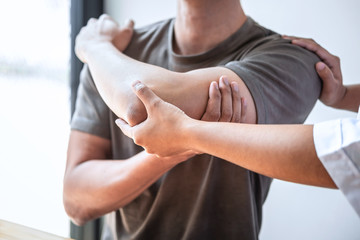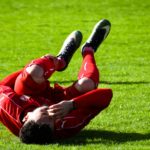
Is pain really that bad or harmful?

What’s the most common symptom us physiotherapists treat? This is by far PAIN. Almost all issues that patients come to our clinic for involve pain. Although pain is a negative experience and we want to help it go away, in some instances it may not be as bad or as harmful as one might expect. This blog will explore instances where pain is not harmful. But first, let’s talk about pain..
What is Pain?
According to the International Association for Study of Pain (IASP), Pain is defined as an unpleasant sensory and emotional experience associated with actual or potential tissue damage. It is a warning signal telling us that our bodies are in danger or at risk of severe injury. It is associated with almost all injuries.
Nociception is our nervous system’s ability to detect painful stimulus. Common painful stimuli include: chemical, mechanical or thermal. Nociceptors are specialised nerve endings that can detect these stimuli and relays this information to the brain. The brain then interprets the stimuli and activates various body systems to produce appropriate physiological and behavioural responses to reduce pain.
Pain that needs to be cautioned:
One type of pain that serves as a warning sign for potential damage is acute pain. This pain is present straight away after the onset of injury. It is an intense, often sharp pain that normally lasts a few days to a week. This type of pain normally decreases after this period because of healing occurring.
This initial period of healing is crucial as the body is clearing all the damaged tissue and laying down new tissue. For this reason, this pain is cautioned. An example of acute pain is the pain from pulling a calf muscle while sprinting. Acute pain can be treated by applying the RICE regime.
When is pain not harmful?
Sometimes it is ok to feel pain and it may not necessarily be harmful. We can acknowledge that in most instances it serves as a warning sign but sometimes pain can be present in excessive amounts or beyond its’ expected time frame. This is chronic pain.
Chronic pain is pain that lasts beyond the expected healing time frames post injury, trauma or surgery. This type of pain doesn’t necessarily indicate tissue damage and most of the time, full healing has already occurred. Pain remains because pain signals remain active in the nervous system. Chronic pain also often has an emotional component produced by higher nervous system processes. This makes chronic pain more difficult to treat.
Another type of pain that we say is ‘ok’ to feel is DOMS (Delayed Onset Muscle Soreness). This type of pain comes on after starting unaccustomed exercise and is a result of micro tearing of muscle fibers. This situation is shy of a proper injury. The pain is achy in nature and usually lasts 48-72 hours post exercise.
More detail on Chronic Pain Syndrome:
Chronic Pain Syndrome (CPS) is a condition where pain is present in excessive amounts for a long period of time. In this situation, there is initially physical injury eg a car accident causing severe soft tissue damage. However, even though the injury heals, the pain persists due to the pain sensation system in the nervous system being overactive. Often symptoms felt aren’t restricted to pain alone.
Symptoms include:
- Constant unrelenting pain.
- Fear avoidance – avoiding doing activities for fear of bringing on pain.
- Excessive fatigue
- Poor sleep
- Irritability
- Low mood
How is this treated?
Advice/Education:
This has great value in treating CPS. When patient’s are well educated on their condition, they have more realistic expectations and know how to apply appropriate self management. With CPS, patients need to be aware that there is no longer any tissue damage present but rather a hyper active nervous system. Therefore, it is OK to exercise or to simply move. This prevents weakness from occurring which would consequently lead to more issues.
Manual therapy:
This has lesser value than advice and education. Some light manual therapy techniques such as massage can be use to help override pain stimulus.
Exercise Therapy:
Prescribing exercises that are aimed to avoid muscle weakness is a crucial part of treating CPS. A lot of guidance and encouragement is needed to help patients work through the pain. Therefore, an exercise programme guided by a physiotherapist is highly recommended.
More on DOMS:
DOMS or Delayed Onset Muscle Soreness is pain felt in muscles that lasts 48 to 72 hours post exercise. This type of pain is normal to expect after doing unaccustomed exercise. We often tell patients that this type of pain is normal to expect in this situation and it is a sign that you have worked hard. You can rest assured that the pain will eventually settle down.
How is this treated?
- Apply Heat – this stimulates blood flow into the sore areas which promotes healing.
- Active recovery by doing low intensity cardio – this can be a gentle walk, swim or cycle.
- Gentle massage – this will help stimulate blood flow to the sore areas.
- Wearing compression garments – another way encourage blood flow into the sore areas.
If you are experiencing pain or for more information, don’t hesitate to book in and see our friendly team at Pivotal Motion. Call us on 07 3352 5116 or book online today!




